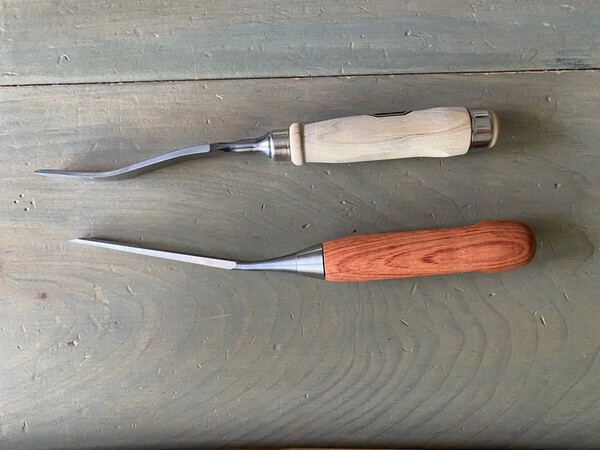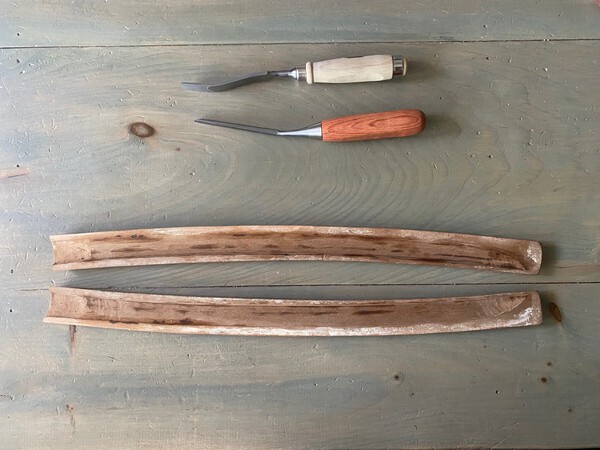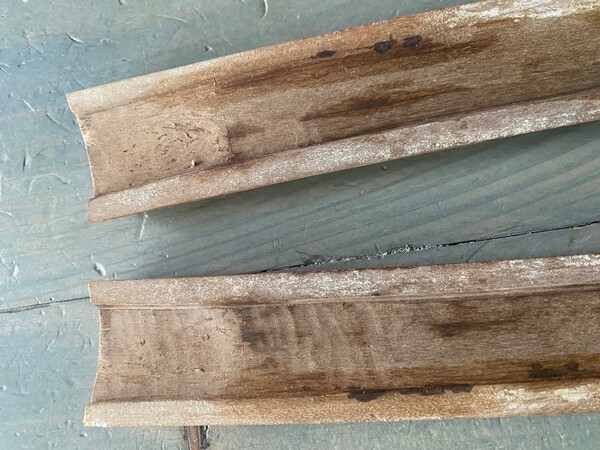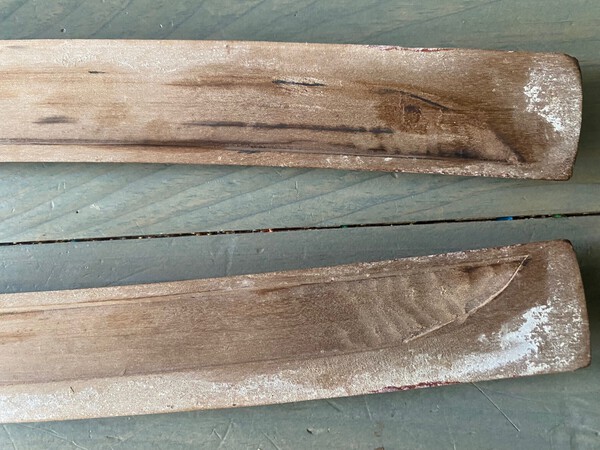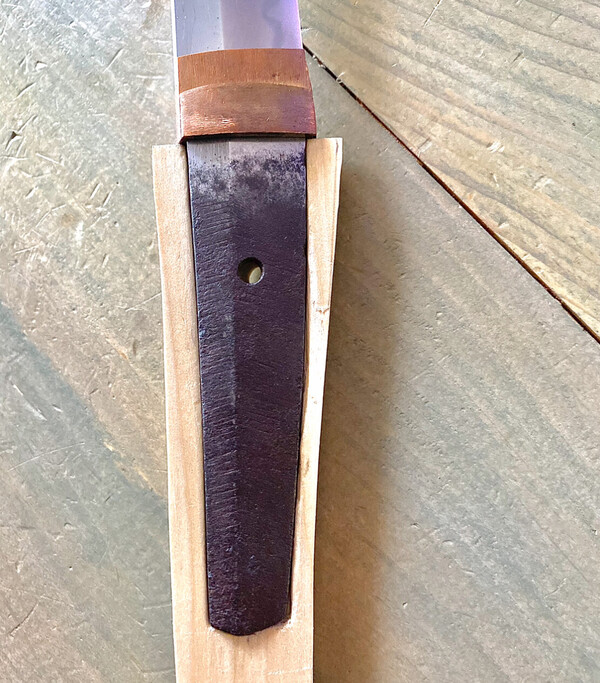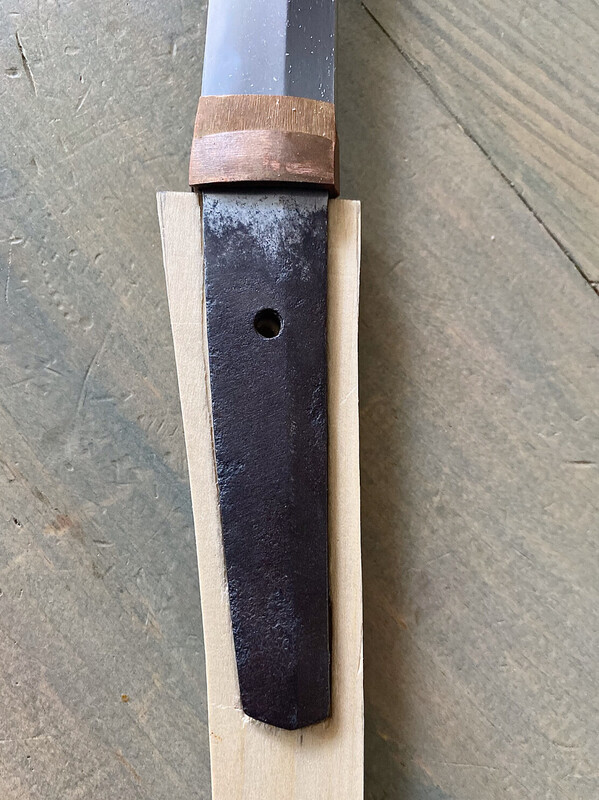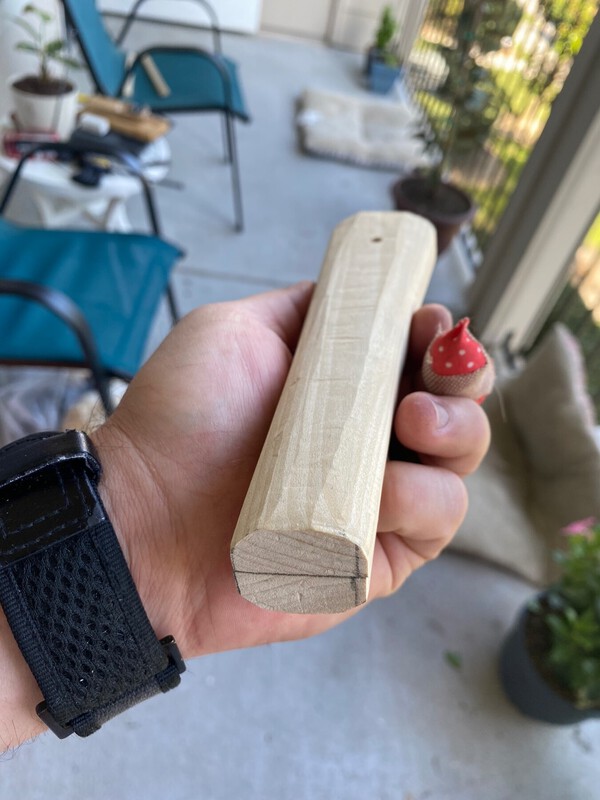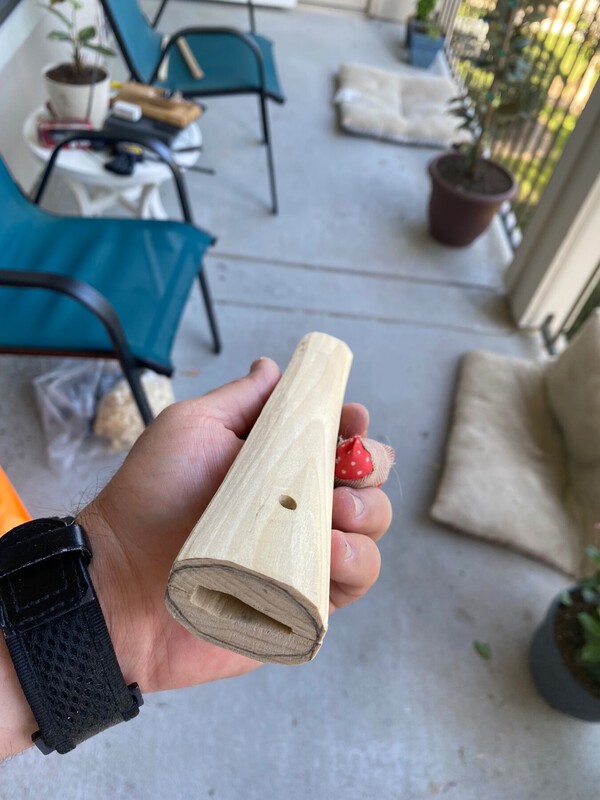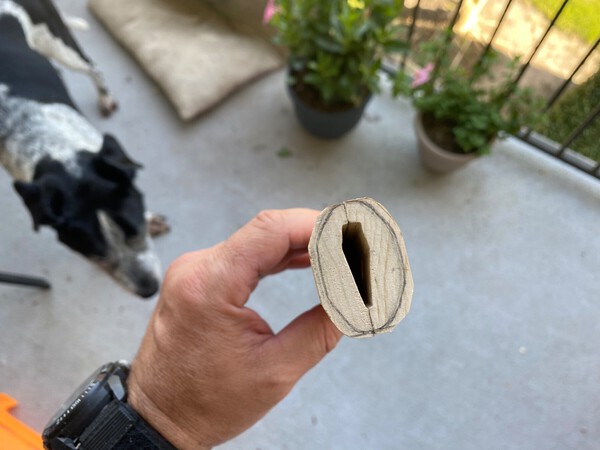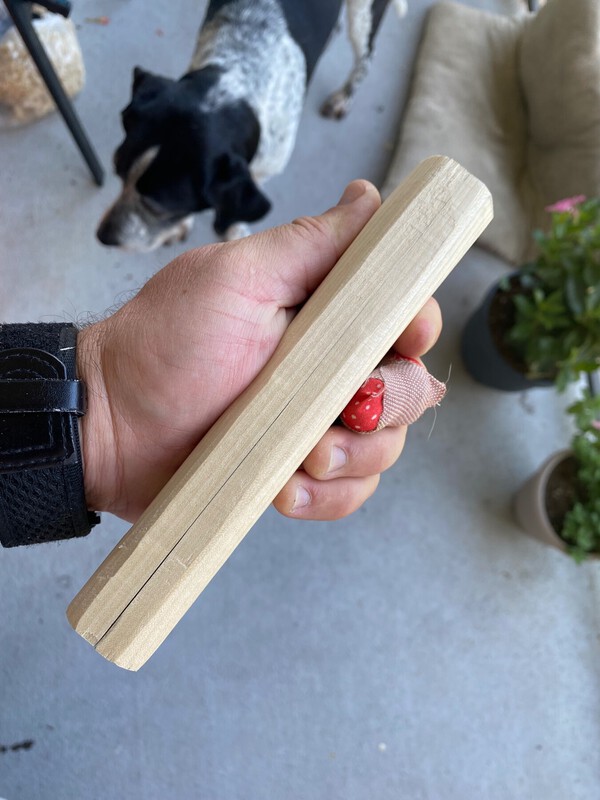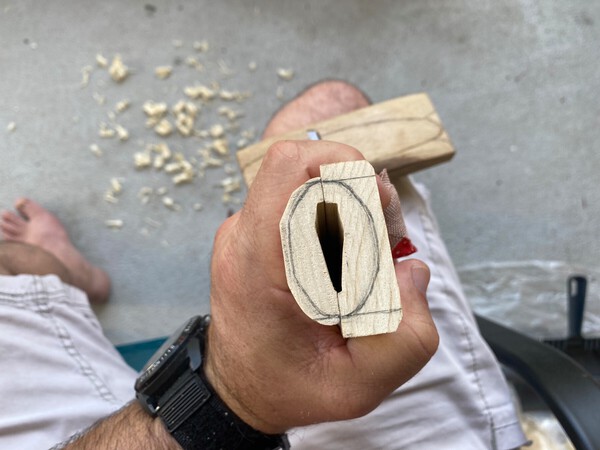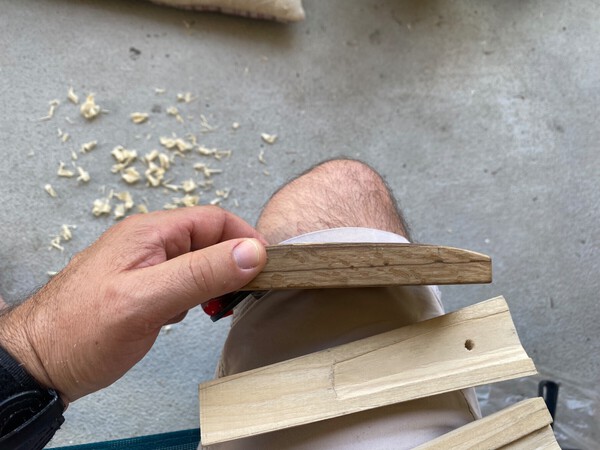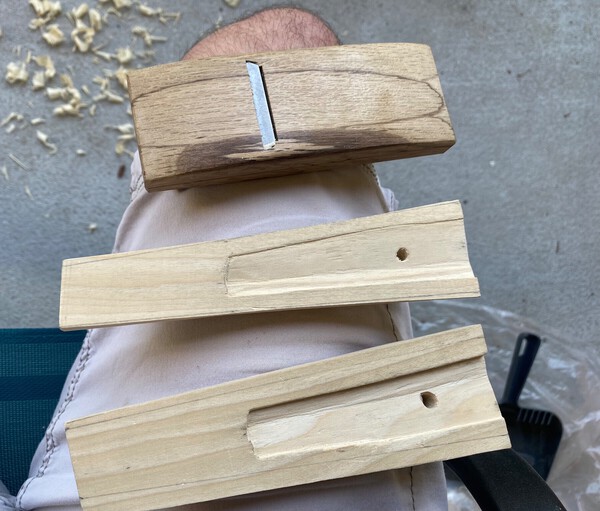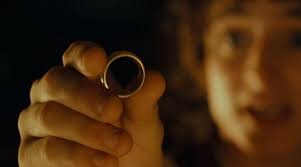-
Posts
235 -
Joined
-
Last visited
Content Type
Profiles
Forums
Events
Store
Downloads
Gallery
Everything posted by WillFalstaff
-

Shirasaya—I’m making one
WillFalstaff replied to WillFalstaff's topic in General Nihonto Related Discussion
David - I'm on Namikawa at least once a week. I yearn for the day when their honoki is back in stock. I've bought from them and they've done a great job, with expedient shipping (at least here to planet Texas). -

Shirasaya—I’m making one
WillFalstaff replied to WillFalstaff's topic in General Nihonto Related Discussion
Tackling a katan length, huh? That's no easy task. I can't believe that expensive chisel bent! Try the Two Cherries Brand curved bevel edged chisels (top one in pic). I have their 16mm one and am contemplating on getting the 10 and 20mm to round out my set. The one I have has works like magic. I also have a WoodRiver 1/4" bent paring chisel, but the angle is less than ideal, and as you can see in the pic, the Two Cherries one has just the right angle "dip". Holds the sharpness too (Deutsch engineering!) The habaki area was a challenge, but I think I got it to fit snugly. I've been contemplating on the contact between the koiguchi and the flat of the tang part, and thinking I might make the koiguchi concave and the handle convex. My old shirasaya has this feature and I wonder if it's an additional seal against air and particles. Also, I think my mekugi-ana is a bit off when I insert the nakago, so I might have to do some fancy wood inlay to correct it. Note how the old shirasaya doesn't have a reservoir for oil at the tip. Old shirasaya old shirasaya -
Gary, you’re forbidden from now on to stop your posts! Swords man . . . you got ‘em we want to see ‘em, and then we (and you) can throw mud at each other!
-
Oh, stop it! Bizen for the win!
-
John, due to my lack of experience, I relied on authority to voice my opinion, which aligns with said authorities’s opinion. I am consulting an expert beyond my experience. He says stop, and reevaluate, and take sayagaki with a grain of salt. I’ve read plenty of stories where an evaluation of a sword in Japan see-sawed between who evaluated and at what time. This, to a layman, suggests educated guesses based on kentai and an incomplete record. I guess when you look at unsigned blades, it’s anyone’s guess, including the experts who have vastly more knowledge and experience handling these blades than we peons do. But still, the blade is excellent and I think whatever judgement is issued it will acknowledge this excellence.
-
Nakahara san has these words about sayagaki: “Originally, if you had many katana in shirasaya (storage scabbards), to keep them in order people would write the smith’s name, length, and so forth on the shirasaya. From around the Meiji period this evolved into notes about the sword’s authenticity and history being recorded on the shirasaya. Later, this became a popular type of authentication by reliable persons, but nowadays sayagaki are not so reliable.” I’ve grown to be not a fan of inscriptions on shirasaya or on origami. If a blade is mumei, then who the F knows? It’s an educated guess. Those inquisitive, look on the patina on the nakago, the shape of the sugata, horimono, jihada, the hamon, and the kissaki, but in the end it’s a toss-up. Does it look like an ancient blade? Sure! Have ancient blades been reproduced in honor of the skilled metal smiths? Oh yeah. Is this an ancient blade . . . my wager goes here . . . But then again, I’m a novice with a history degree, looking into a specific field of cultural history, so take my comment as just that. I love your posts, so please keep posting Gary! Sword porn at it’s best.
-

Shirasaya—I’m making one
WillFalstaff replied to WillFalstaff's topic in General Nihonto Related Discussion
-

Shirasaya—I’m making one
WillFalstaff replied to WillFalstaff's topic in General Nihonto Related Discussion
-

Shirasaya—I’m making one
WillFalstaff replied to WillFalstaff's topic in General Nihonto Related Discussion
-

Shirasaya—I’m making one
WillFalstaff replied to WillFalstaff's topic in General Nihonto Related Discussion
Work in progress with the kanna. Comparison of the Ura (left) and Omote, after whittling with the kanna. -

Shirasaya—I’m making one
WillFalstaff replied to WillFalstaff's topic in General Nihonto Related Discussion
-

Shirasaya—I’m making one
WillFalstaff replied to WillFalstaff's topic in General Nihonto Related Discussion
I decided to detail work on the nakago part first, then transition to the rest, using the nakago dimensions. (Crossed Heart Forge on youtube helped out a lot, so a big shout out to Dave and jealousy over his skills compared to mine.) The Ura side (below my Kanna) and the Omote side. The Omote side seats the tang more than the Ura side, following the traditional design. -
One of my rescues (nangamaki naoshi - wakizashi) came with a sad saya (with a crack along the seam, but still a beut), and ill-fitting koshirae. The blade needs a proper storage scabbard. Pics to follow. I did some research and found out that you have to trade an arm and a leg for Japanese ho wood, aged 10 years, and decided to go with poplar. Those in the know will tell you this is to avoid any caustic sap other lumber may excrete over time. I began this project about three weeks ago. Right now, as we house hunt, we live in an apartment, having moved from CT to TX last year. I had to give away almost all of my power tools, hand tools, and everything else precious and make the move with bare-bones essentials (we drove to TX). I did get a decent orbital jig saw at a pawn shop. I also had to invest in a Guitar Brace wood chisel (cheap saya nomi, or traditional Japanese bent paring chisel—it’s the angle people, the. angle.), a Japanese 42mm block plane (Kanna), which I had to modify to become an compass plane with a rounded bottom so that I can work the curves (otherwise $138 - the standard block plane was $26), a kiridashi (Japanese single bevel utility knife, claimed to be hand forged), and a cheaper sharpening kit to keep the above tools up to snuff (and remove skin from fingertips). I have an orbital sander (did not use on inside of scabbard!!), an oscillating multi-tool, and other usual hand tools, including a hand-dandy Stanley hand saw and sawing block (GOD I MISS MY MITER SAW!!). So, mistakes first: - the poplar I picked is fine, but most sayashi take a plank of ho wood and saw it in half lengthwise, then carve the two insides, then glue the two sides back together. This is to prevent the saya from popping open when humidity changes (how the wood grain runs, etc.). The rice glue is strong, but not strong enough (by design) to damage the wood when splitting forces happen. So, this being my first, experimental saya, I will adjust fire and move on. - I did not appreciate the subtleties of carving the inside cavities. I realized, after a lot of work, that the blade really touches the saya only at the habaki, to seal the blade into the saya, and across the mune side to the tip, where the reservoir is for any excess oil. Therefore, the point of focus and perfect carving should belong to the habaki fit and the tip. I now know more! - I cut the blank for the saya a bit too soon, and once I referenced an old, split apart saya (maybe 200 years old), I realized I should have saved more space for the tip end of the saya. - I had to work extra, once I compared my work to the old saya, to smooth the inside cavity. I should have started with a narrower chisel at the mune part of the cavity, then work my way, ever increasing the width of the chisel, to the ha side. Once I did this it worked like a charm. - I have worked with power tools and hand tools all my life, professional setting and as hobby. Japanese tools are SHARP!!! Especially after you hand sharpen them to a high degree, like I did (hence bandaged finger in the pics). What went right: - Poplar is great to work with. It’s much easier than hardwoods I’ve worked with and not as “juicy” as fresh pine. - After some trial and error, using the altered kanna plane was like magic (especially after re-sharpening the factory sharpened blade, which didn’t last long). I can whittle with that sucka! Outside of a belt sander (I wish), I can’t think of a better tool to whittle down the blanks to shape. The last part I will use sand paper on (only the outside and the holes for the nakago and blade will be sealed to avoid the dreaded sanding material scratches) to finely create the final shape. - Attention to detail is key, so is prior experience. I have made wood core scabbards for my Albion Regent (hollow ground blades are a bitch to make snug-fit scabbards for) and a couple of other European swords. Also a history of working in construction and some other mild carpentry got me ready. - After having doubts about how the shirasaya will turn out, having roughed out the nakago part (tanto) and seeing it ready for gluing, I feel more emboldened. So, I guess i’ll keep this post updated as I progress. Again, I’m dealing with some serious restrictions on the labor and tools. If you guys have any insights it’s appreciated, especially sourcing ho wood or/and tools. There are some “antique” tools on ebay straight from Japan, but spending $25 on a decent saya nomi, then $40 on shipping - uh . . . no. Pics to follow.
-
The fascinating part for me was at the end, where Darcy asked the question from dealers in Japan. One opinion was that it was the junky blades that samurai owned, and the fancy-pants expensive wakizashi were owned by the merchant class. Makes me look again at my cheap, rusty wakizashi as potentially having been owned by the warrior* class. *During the mid and late Edo period, most samurai had never seen battle and would have been canon fodder in skill compared to the earlier warring periods.
-

Sugata of tachi through the Historical periods
WillFalstaff replied to WillFalstaff's topic in Nihonto
Yeah, I'm seeing a lot of Muromachi and mid-Edo period slender katanas too. -
I wonder if some of the merchants had swords not because of bodily threats to them, but because, as we have today with the gun-porn society, they wanted to show off. Of course, samurai had training in the use of their weapons, and the merchant may have had little to no training. Reminds me of the movie 13 Assassins, where the conspirators were specifically looking for samurai who were good at using weapons because they knew the target lord's samurai were not very good fighters.
-
The mention of utsuri immediately made me think Bizen at first, but as it wasn't a defining feature and "slightly visible" might mean a smith working with Bizen style.
-
Maybe some knucklehead was trying to make it into some kind of wearable jewelry, but then the tsuba fought back, and won.
-

Hmm...so what do we have here?
WillFalstaff replied to Brian's topic in Auctions and Online Sales or Sellers
-

Interesting Short Documentary on Nihonto
WillFalstaff replied to Ronin 47's topic in General Nihonto Related Discussion
I love those cheap, latex half-bald samurai wigs! -
When needlessly staring into the dark abyss of buyer's remorse, remember the wise words of Nakahara-san: "To begin with, when purchasing a sword, it should be judged on its own merits, not on the kantei-sho it holds . . . However, if both dealers and enthusiasts come to really understand swords and their actual quality, I believe the current deplorable kantei-sho-selling economy will eventually cease to exist. When this happens it will be a satisfactory state of affairs, and collectors and dealers will no longer need to use certificates. The next time you buy a sword with kantei-sho, remember this story. A man was buying a sword from a dealer. The dealer said, 'As this sword has kantei-show, I cannot reduce the price at all.' So the customer joked, 'Actually, I don't need the kantei-sho, only the sword. So just take off the price of the kantei-sho and I'll be on my way.' The sword dealer was not amused." I personally think your decision making is spot-on! When I manage to scrounge together enough for a fine quality blade (prob. around Stardate 47457.1) my first consideration will be the quality of the blade, second the history the blade saw from forging to now, third the story of the smith, and a far, far, distant fourth consideration will be the resale value.
-
I wonder why the hamachi and munemachi were moved up? For a longer tsuba? If so, that could have been a complicated and expensive move on the part of the previous owner.
-
I'm at the level of: I-know-how-to-read-words-in-books-about-pointy-things-from-half-way-around-the-world. At least it's gotten me on the hamster wheel.



